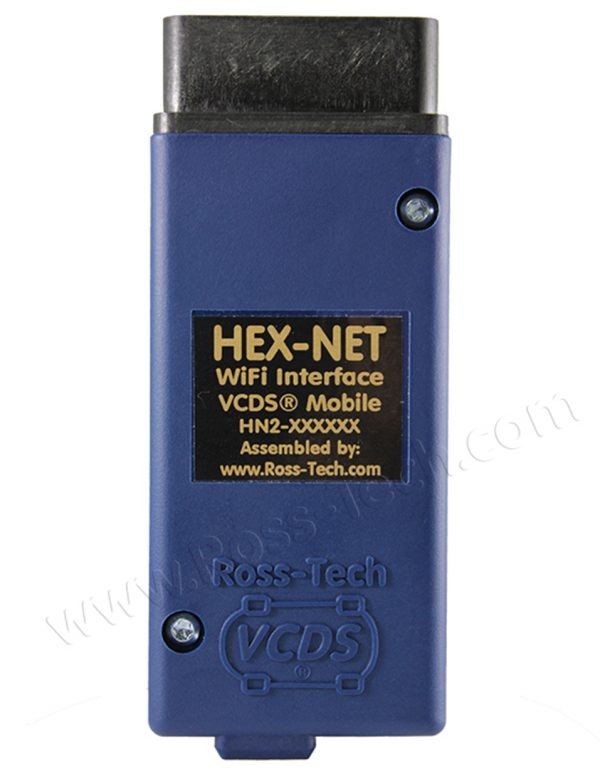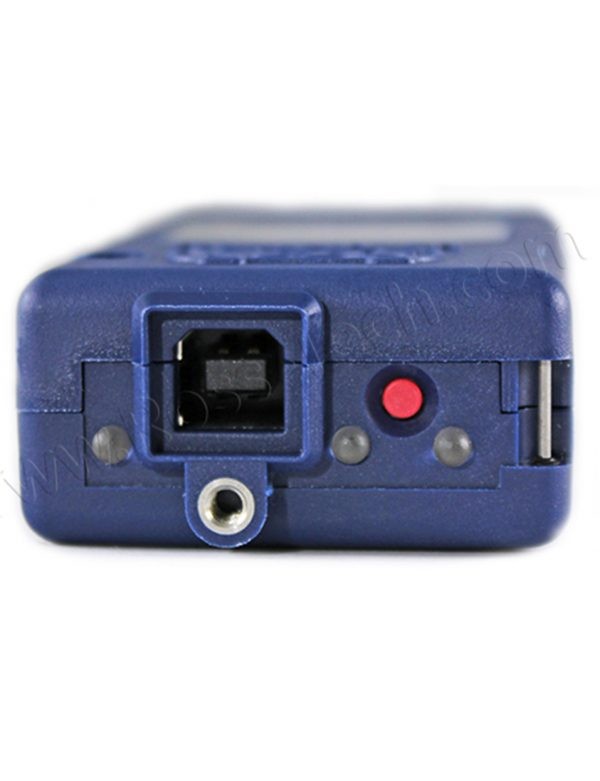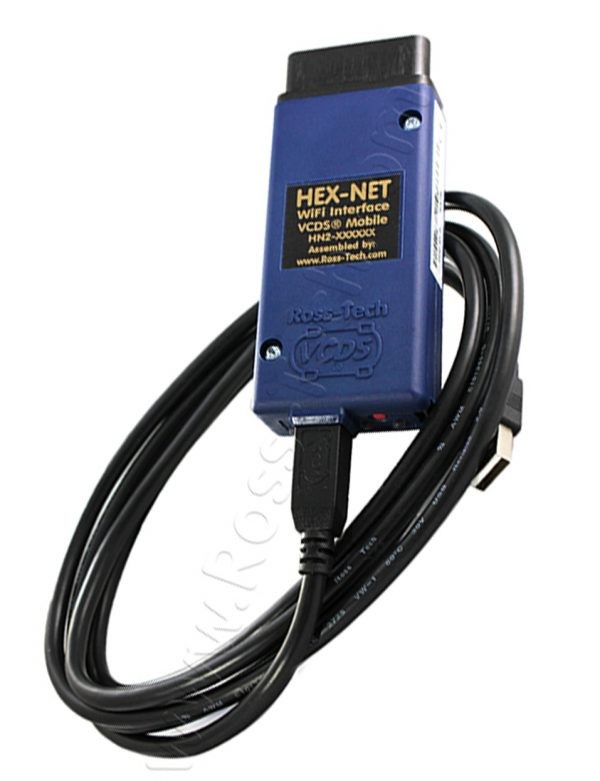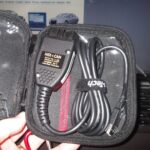Hexnet Vcds Mobile Release Parking Brake offers a powerful solution for diagnosing and servicing vehicles, especially concerning complex systems like electronic parking brakes; CAR-CODING.EDU.VN offers expert remote support to navigate these intricacies safely and efficiently. Our remote car coding assistance ensures technicians can confidently tackle ECU programming, activate hidden features, and resolve challenging fault codes.
Contents
- 1. What is HEXNET VCDS Mobile and How Does it Relate to Parking Brake Release?
- 1.1 Why is the Parking Brake Release Function Important?
- 1.2 What are the Key Features of HEXNET VCDS Mobile?
- 1.3 What Devices are Compatible with HEXNET VCDS Mobile?
- 2. How Does HEXNET VCDS Mobile Help with Releasing the Electronic Parking Brake?
- 2.1 What Steps are Involved in Releasing the Parking Brake Using HEXNET VCDS Mobile?
- 2.2 What are the Common Challenges When Releasing the Parking Brake?
- 2.3 How Can CAR-CODING.EDU.VN Assist with Parking Brake Release Challenges?
- 3. Understanding the Technical Aspects of Electronic Parking Brake Systems
- 3.1 How Does an Electronic Parking Brake System Work?
- 3.2 What are the Different Types of Electronic Parking Brake Systems?
- 3.3 What are the Common Faults in Electronic Parking Brake Systems?
- 4. Using VCDS-Mobile for Advanced Diagnostics and Coding
- 4.1 How Can VCDS-Mobile Help in Identifying Fault Codes?
- 4.2 What Adaptations Can Be Performed Using VCDS-Mobile?
- 4.3 How Does Coding with VCDS-Mobile Enhance Vehicle Functionality?
- 4.4 What are Some Examples of Advanced Coding Procedures?
- 5. Safety Precautions When Working with Electronic Parking Brake Systems
- 5.1 What are the Essential Safety Measures to Consider?
- 5.2 What are the Potential Risks of Improper Handling?
- 5.3 How Does CAR-CODING.EDU.VN Emphasize Safety in Remote Support?
- 6. Remote Car Coding Assistance: The Future of Automotive Diagnostics
- 6.1 What are the Benefits of Remote Car Coding Assistance?
- 6.2 How Does CAR-CODING.EDU.VN Provide Remote Support?
- 6.3 What Types of Coding and Programming Services are Offered Remotely?
- 7. VIN Coding and Its Importance in Modern Automotive Repair
- 7.1 What is VIN Coding and How Does It Work?
- 7.2 Why is VIN Coding Necessary?
- 7.3 How Does VCDS-Mobile Assist with VIN Coding?
- 8. Activating Hidden Features: Unlocking Your Vehicle’s Full Potential
- 8.1 What are Hidden Features and Why are They Disabled?
- 8.2 What are Some Examples of Commonly Activated Hidden Features?
- 8.3 How Can CAR-CODING.EDU.VN Help with Activating Hidden Features?
- 9. Why Choose CAR-CODING.EDU.VN for Your Automotive Coding Needs?
- 9.1 What Makes CAR-CODING.EDU.VN Different?
- 9.2 What Types of Vehicles and Systems are Supported?
- 9.3 How Can I Get Started with CAR-CODING.EDU.VN?
- 10. FAQ About HEXNET VCDS Mobile Release Parking Brake and Remote Car Coding
- 10.1 Is it Safe to Perform Coding on My Vehicle?
- 10.2 What Equipment Do I Need to Use Remote Car Coding Services?
- 10.3 How Much Does Remote Car Coding Assistance Cost?
- 10.4 Can You Help with Activating Hidden Features on Any Car?
- 10.5 What Happens if Something Goes Wrong During Coding?
- 10.6 How Long Does a Typical Remote Coding Session Take?
- 10.7 What If I Don’t Have a HEXNET VCDS Mobile Interface?
- 10.8 Are There Any Risks Associated with Releasing the Electronic Parking Brake?
- 10.9 What Payment Methods Do You Accept?
- 10.10 How Do I Contact CAR-CODING.EDU.VN for Remote Support?
1. What is HEXNET VCDS Mobile and How Does it Relate to Parking Brake Release?
HEXNET VCDS Mobile is a diagnostic tool that uses a wireless or wired connection to turn your device into a factory-level diagnostic system for VW, Audi, Seat, and Skoda vehicles, which allows for releasing electronic parking brakes. This system communicates with VCDS software via WiFi or USB, enabling comprehensive diagnostics, coding, and adaptations, including essential procedures like parking brake release for maintenance or repair.
1.1 Why is the Parking Brake Release Function Important?
The parking brake release function is crucial for several maintenance and repair tasks on modern vehicles equipped with electronic parking brake (EPB) systems. Releasing the parking brake is necessary for servicing rear brakes, replacing brake pads, rotors, or calipers, and performing diagnostics on the EPB system itself. Without the ability to properly release the EPB, these procedures can become significantly more difficult or even impossible, potentially leading to damage to the system or incorrect repairs.
1.2 What are the Key Features of HEXNET VCDS Mobile?
HEXNET VCDS Mobile boasts a range of features that make it a versatile tool for automotive technicians. These features include:
- Wireless Connectivity: Connects via WiFi for convenient, unrestricted movement around the vehicle.
- Broad Compatibility: Works with a wide range of devices, including Windows PCs, Apple iPads, iPhones, and Android phones and tablets.
- Comprehensive Diagnostics: Performs factory-level diagnostics for VW, Audi, Seat, and Skoda vehicles from 1995 to current models.
- Coding and Adaptations: Enables coding and adaptation of control modules, including the electronic parking brake system.
- Mobile Functionality: VCDS-Mobile software allows diagnostics on non-PC devices, enhancing flexibility.
- Unlimited VINs: Unrestricted number of cars.
- Direct CAN Connection: Works with the latest models which require a direct CAN connection and use the UDS/ODX protocol.
1.3 What Devices are Compatible with HEXNET VCDS Mobile?
The versatility of HEXNET VCDS Mobile extends to its compatibility with a variety of devices:
- Microsoft Windows versions from Windows 7 through the current Windows 11.
- Apple iPad, iPhone, etc.
- Most Android phones and tablets.
- Blackberry Z10, Q10, etc.
- Microsoft Surface & Windows Phone.
- KindleFire, etc.
 HEX-NET-Blue-Front
HEX-NET-Blue-Front
The HEX-NET Pro WiFi Interface
2. How Does HEXNET VCDS Mobile Help with Releasing the Electronic Parking Brake?
HEXNET VCDS Mobile simplifies releasing the electronic parking brake by providing a user-friendly interface and guided procedures. The software communicates directly with the EPB control module, allowing technicians to retract the brake calipers electronically, which is essential for servicing the rear brakes. This process typically involves accessing the EPB module within the VCDS-Mobile software, selecting the appropriate function (e.g., “Basic Setting” or “Adaptation”), and following the on-screen instructions to retract the calipers.
2.1 What Steps are Involved in Releasing the Parking Brake Using HEXNET VCDS Mobile?
The exact steps for releasing the parking brake can vary slightly depending on the vehicle model and year. However, the general procedure involves the following:
- Connect: Connect the HEXNET interface to the vehicle’s OBD-II port.
- Access EPB Module: Open the VCDS-Mobile software on your device and select the EPB control module.
- Select Function: Choose the appropriate function for releasing the parking brake (e.g., “Basic Setting,” “Adaptation,” or “Retract Calipers”).
- Follow Instructions: Follow the on-screen instructions provided by the software. This may involve entering specific values or performing a series of actions.
- Verify Release: Once the procedure is complete, verify that the parking brake is fully released before proceeding with any maintenance or repair work.
2.2 What are the Common Challenges When Releasing the Parking Brake?
Despite the convenience of HEXNET VCDS Mobile, technicians may encounter challenges when releasing the electronic parking brake:
- Software Compatibility: Ensuring the VCDS-Mobile software is up-to-date and compatible with the vehicle model.
- Communication Errors: Resolving communication errors between the interface and the EPB control module.
- Incorrect Procedures: Avoiding mistakes during the release procedure, which can potentially damage the EPB system.
- Module Lockout: Dealing with situations where the EPB module is locked or requires a security code to access.
- Calibration Issues: Addressing any calibration issues that may arise after releasing the parking brake.
2.3 How Can CAR-CODING.EDU.VN Assist with Parking Brake Release Challenges?
CAR-CODING.EDU.VN offers expert remote support to help technicians overcome challenges related to releasing electronic parking brakes using HEXNET VCDS Mobile. Our services include:
- Remote Diagnostics: Diagnosing communication errors and other issues remotely.
- Guided Procedures: Providing step-by-step guidance on the correct parking brake release procedures.
- Software Support: Assisting with software updates, compatibility issues, and troubleshooting.
- Module Unlock: Helping to unlock EPB modules and obtain necessary security codes.
- Calibration Assistance: Providing guidance on performing EPB calibration after brake service.
- Real-time Support: Offering real-time support via remote connection to ensure a smooth and successful parking brake release.
 HEX-NET-Blue-Side
HEX-NET-Blue-Side
The HEX-NET Pro WiFi Interface side view
3. Understanding the Technical Aspects of Electronic Parking Brake Systems
To effectively diagnose and service electronic parking brake systems, technicians must understand their underlying technical principles. EPB systems typically consist of an electronic control unit (ECU), electric motors integrated into the rear brake calipers, and various sensors that monitor brake status. The ECU controls the electric motors to apply or release the parking brake based on driver input or system requirements.
3.1 How Does an Electronic Parking Brake System Work?
When the driver activates the EPB, the ECU sends a signal to the electric motors in the rear calipers. These motors then drive a mechanism that applies pressure to the brake pads, clamping them against the rotors and holding the vehicle in place. When the driver releases the EPB, the ECU reverses the polarity to the motors, causing them to retract the brake pads.
3.2 What are the Different Types of Electronic Parking Brake Systems?
There are two main types of EPB systems:
- Caliper-Integrated Systems: These systems integrate the electric motor directly into the brake caliper, providing a compact and efficient design.
- Cable-Pulling Systems: These systems use an electric motor to pull a cable that applies the parking brake. While less common, these systems can be found on some vehicles.
3.3 What are the Common Faults in Electronic Parking Brake Systems?
EPB systems are susceptible to various faults, including:
- Motor Failure: Electric motors can fail due to wear and tear or environmental factors.
- Sensor Malfunctions: Sensors that monitor brake pad wear, caliper position, or system pressure can malfunction, leading to incorrect readings or system errors.
- Wiring Issues: Damaged or corroded wiring can disrupt communication between the ECU and other components.
- Software Glitches: Software glitches in the ECU can cause the system to malfunction.
- Calibration Problems: Improper calibration after brake service can lead to EPB issues.
4. Using VCDS-Mobile for Advanced Diagnostics and Coding
Beyond parking brake release, VCDS-Mobile offers a wide range of advanced diagnostic and coding capabilities that can enhance a technician’s ability to service modern vehicles. These capabilities include reading and clearing fault codes, performing adaptations, coding control modules, and accessing live data.
4.1 How Can VCDS-Mobile Help in Identifying Fault Codes?
VCDS-Mobile can quickly scan all control modules in a vehicle and identify any stored fault codes. These fault codes provide valuable information about the nature and location of problems within the vehicle’s systems. By interpreting these fault codes, technicians can pinpoint the source of the issue and take appropriate corrective action.
4.2 What Adaptations Can Be Performed Using VCDS-Mobile?
Adaptations allow technicians to adjust the settings of various control modules to match specific vehicle configurations or customer preferences. For example, adaptations can be used to adjust the sensitivity of parking sensors, calibrate the throttle body, or adapt the engine control unit after replacing components.
4.3 How Does Coding with VCDS-Mobile Enhance Vehicle Functionality?
Coding involves modifying the software parameters of control modules to enable or disable certain features or functions. This can be used to activate hidden features, customize vehicle behavior, or retrofit components. For example, coding can be used to enable cornering lights, activate daytime running lights, or enable trailer hitch functionality.
4.4 What are Some Examples of Advanced Coding Procedures?
Examples of advanced coding procedures include:
- Activating Hidden Features: Unlocking features that are already present in the vehicle’s software but are disabled by default (e.g., enabling lap timer on the instrument cluster).
- Retrofitting Components: Coding control modules to recognize and integrate new components that were not originally installed in the vehicle (e.g., retrofitting a rearview camera).
- Customizing Vehicle Behavior: Modifying vehicle settings to suit individual preferences (e.g., adjusting the sensitivity of the rain sensor).
- Disabling Unwanted Features: Disabling features that are not desired or required (e.g., disabling the soundaktor on certain VW models).
5. Safety Precautions When Working with Electronic Parking Brake Systems
Working with electronic parking brake systems requires strict adherence to safety precautions. Due to the potential for unexpected movement or system malfunctions, technicians must take extra care to avoid injury or damage.
5.1 What are the Essential Safety Measures to Consider?
Essential safety measures include:
- Chocking Wheels: Always chock the wheels of the vehicle before working on the EPB system to prevent accidental rolling.
- Disconnecting Battery: Disconnect the vehicle’s battery to prevent accidental activation of the EPB system.
- Following Procedures: Follow the correct release and service procedures outlined in the vehicle’s service manual.
- Using Proper Tools: Use the appropriate tools and equipment for the job, including HEXNET VCDS Mobile and any necessary adapters.
- Wearing Safety Gear: Wear appropriate safety gear, such as gloves and eye protection.
5.2 What are the Potential Risks of Improper Handling?
Improper handling of EPB systems can lead to various risks:
- Personal Injury: Accidental activation of the EPB can cause injury to technicians or bystanders.
- System Damage: Incorrect procedures can damage the EPB control module, calipers, or other components.
- Vehicle Damage: Failure to properly release the EPB can cause damage to the brakes or other parts of the vehicle.
- Data Loss: Incorrect coding or adaptations can lead to data loss or system malfunctions.
5.3 How Does CAR-CODING.EDU.VN Emphasize Safety in Remote Support?
CAR-CODING.EDU.VN prioritizes safety in all remote support interactions. Our experts provide detailed instructions, guide technicians through each step of the process, and emphasize the importance of following safety precautions. We also offer real-time monitoring and intervention to prevent mistakes and ensure a safe and successful outcome.
6. Remote Car Coding Assistance: The Future of Automotive Diagnostics
Remote car coding assistance is transforming the automotive diagnostics and repair industry. By leveraging remote technology, technicians can access expert knowledge and support from anywhere in the world, enabling them to tackle complex coding and programming tasks with confidence.
6.1 What are the Benefits of Remote Car Coding Assistance?
The benefits of remote car coding assistance include:
- Expert Support: Access to experienced professionals who specialize in car coding and programming.
- Cost Savings: Reduced need for expensive on-site visits or specialized equipment.
- Time Efficiency: Faster turnaround times for complex repairs and coding tasks.
- Wider Service Range: Ability to offer coding and programming services even without in-house expertise.
- Reduced Risk: Minimized risk of errors or damage due to expert guidance and real-time monitoring.
6.2 How Does CAR-CODING.EDU.VN Provide Remote Support?
CAR-CODING.EDU.VN provides remote support through a secure and reliable remote connection. Technicians connect their diagnostic tool (e.g., HEXNET VCDS Mobile) to the vehicle, and then establish a remote session with our experts. Our experts can then remotely access the vehicle’s systems, diagnose problems, provide guidance, and perform coding or programming tasks as needed.
6.3 What Types of Coding and Programming Services are Offered Remotely?
CAR-CODING.EDU.VN offers a wide range of remote coding and programming services, including:
- ECU Programming: Flashing and programming engine control units (ECUs) and other control modules.
- Coding and Adaptations: Coding control modules to enable or disable features, customize vehicle behavior, or retrofit components.
- Fault Code Clearing: Clearing persistent fault codes and resolving underlying issues.
- Key Programming: Programming new keys or immobilizer systems.
- Diagnostic Assistance: Providing expert diagnostic assistance to identify and resolve complex vehicle problems.
- Electronic Parking Brake Support: Releasing and calibrating parking brakes using HEXNET VCDS Mobile.
 HEX-NET-Blue-Complet
HEX-NET-Blue-Complet
HEX-NET Pro WiFi Interface full kit
7. VIN Coding and Its Importance in Modern Automotive Repair
VIN (Vehicle Identification Number) coding is a critical aspect of modern automotive repair and diagnostics. VIN coding involves programming specific control modules with the vehicle’s unique VIN, ensuring proper system operation and preventing compatibility issues.
7.1 What is VIN Coding and How Does It Work?
VIN coding is the process of assigning the vehicle’s unique 17-character VIN to various control modules within the vehicle. This VIN serves as an identifier, allowing the control modules to communicate with each other and function correctly. VIN coding is essential when replacing or reprogramming control modules, as the new module must be programmed with the correct VIN to match the vehicle.
7.2 Why is VIN Coding Necessary?
VIN coding is necessary for several reasons:
- System Compatibility: Ensures that all control modules are compatible with each other and can communicate properly.
- Theft Prevention: Helps to prevent theft by ensuring that stolen control modules cannot be easily installed in other vehicles.
- Warranty Validation: Allows manufacturers to track warranty claims and ensure that repairs are performed on the correct vehicle.
- Legal Compliance: In some regions, VIN coding is required by law to prevent the use of stolen or counterfeit parts.
7.3 How Does VCDS-Mobile Assist with VIN Coding?
VCDS-Mobile simplifies VIN coding by providing a user-friendly interface and guided procedures. The software can automatically read the vehicle’s VIN and program it into the appropriate control modules. This process typically involves accessing the control module within the VCDS-Mobile software, selecting the VIN coding function, and following the on-screen instructions.
8. Activating Hidden Features: Unlocking Your Vehicle’s Full Potential
Many modern vehicles have hidden features that are disabled by default but can be activated through coding. These hidden features can enhance the vehicle’s functionality, convenience, or aesthetics.
8.1 What are Hidden Features and Why are They Disabled?
Hidden features are functions or capabilities that are already present in the vehicle’s software but are disabled by the manufacturer. These features may be disabled for various reasons, such as:
- Market Segmentation: To differentiate between different trim levels or models.
- Regulatory Compliance: To comply with specific regulations in certain regions.
- Testing and Validation: To disable features that are still under development or have not been fully validated.
- Cost Savings: To reduce manufacturing costs by using a common software platform for multiple models.
8.2 What are Some Examples of Commonly Activated Hidden Features?
Examples of commonly activated hidden features include:
| Feature | Description |
|---|---|
| Cornering Lights | Activates fog lights to illuminate the direction of travel when turning. |
| Lap Timer | Enables a lap timer function on the instrument cluster. |
| Comfort Turn Signals | Increases the number of flashes for the turn signal with a single tap. |
| Emergency Brake Flashing | Activates hazard lights during hard braking. |
| Gauge Staging | Sweeps the instrument cluster needles upon startup. |
| Soundaktor Deactivation | Disables the artificial engine noise generated by the soundaktor. |
| Auto-folding Mirrors | Automatically folds the side mirrors when the vehicle is locked. |
| Coming Home/Leaving Home Lights | Activates headlights or fog lights when unlocking or locking the vehicle at night. |
8.3 How Can CAR-CODING.EDU.VN Help with Activating Hidden Features?
CAR-CODING.EDU.VN offers expert remote support to help technicians activate hidden features on a wide range of vehicles. Our experts can identify the available hidden features, provide detailed coding instructions, and ensure that the activation process is performed safely and correctly.
9. Why Choose CAR-CODING.EDU.VN for Your Automotive Coding Needs?
CAR-CODING.EDU.VN stands out as a premier provider of remote automotive coding services due to its expertise, comprehensive support, and commitment to customer satisfaction.
9.1 What Makes CAR-CODING.EDU.VN Different?
Several factors differentiate CAR-CODING.EDU.VN from other remote coding providers:
- Expertise: Our team comprises highly skilled and experienced coding specialists.
- Comprehensive Support: We offer a wide range of services.
- Cutting-Edge Technology: We utilize the latest diagnostic tools and remote support technology.
- Customer Focus: We prioritize customer satisfaction and strive to exceed expectations.
- Affordable Pricing: We offer competitive pricing and flexible payment options.
9.2 What Types of Vehicles and Systems are Supported?
CAR-CODING.EDU.VN supports a wide range of vehicle makes and models, including:
- European Brands: VW, Audi, BMW, Mercedes-Benz, Porsche, Volvo, Land Rover.
- American Brands: Ford, Chevrolet, Dodge, Cadillac, Lincoln.
- Asian Brands: Toyota, Honda, Nissan, Hyundai, Kia.
We also support a wide range of vehicle systems, including:
- Engine Control Units (ECUs)
- Transmission Control Units (TCUs)
- Anti-lock Braking Systems (ABS)
- Airbag Systems
- Body Control Modules (BCMs)
- Infotainment Systems
- Navigation Systems
- Electronic Parking Brake (EPB) Systems
9.3 How Can I Get Started with CAR-CODING.EDU.VN?
Getting started with CAR-CODING.EDU.VN is easy. Simply contact us via phone or email to discuss your specific needs and requirements. We will then schedule a remote support session and guide you through the process.
10. FAQ About HEXNET VCDS Mobile Release Parking Brake and Remote Car Coding
Here are some frequently asked questions about HEXNET VCDS Mobile release parking brake and remote car coding:
10.1 Is it Safe to Perform Coding on My Vehicle?
Yes, when performed by qualified professionals using proper tools and procedures, coding is safe. CAR-CODING.EDU.VN ensures all coding is done safely and correctly.
10.2 What Equipment Do I Need to Use Remote Car Coding Services?
You typically need a diagnostic tool (like HEXNET VCDS Mobile), a laptop or tablet with internet access, and a stable connection to the vehicle’s OBD-II port.
10.3 How Much Does Remote Car Coding Assistance Cost?
The cost varies depending on the complexity of the task. Contact CAR-CODING.EDU.VN for a personalized quote.
10.4 Can You Help with Activating Hidden Features on Any Car?
While not all cars have hidden features, CAR-CODING.EDU.VN can assess your vehicle and determine what features can be activated.
10.5 What Happens if Something Goes Wrong During Coding?
CAR-CODING.EDU.VN has safety measures in place to prevent issues. If any problems arise, our experts are equipped to resolve them quickly and efficiently.
10.6 How Long Does a Typical Remote Coding Session Take?
The duration varies depending on the complexity of the task, but most sessions are completed within an hour.
10.7 What If I Don’t Have a HEXNET VCDS Mobile Interface?
CAR-CODING.EDU.VN can advise you on the best diagnostic tools for your needs and provide guidance on their use.
10.8 Are There Any Risks Associated with Releasing the Electronic Parking Brake?
When done correctly, releasing the electronic parking brake is safe. However, improper procedures can damage the system. Always follow expert guidance.
10.9 What Payment Methods Do You Accept?
CAR-CODING.EDU.VN accepts various payment methods, including credit cards, PayPal, and bank transfers.
10.10 How Do I Contact CAR-CODING.EDU.VN for Remote Support?
You can contact CAR-CODING.EDU.VN via WhatsApp at +1 (641) 206-8880 or visit our website at CAR-CODING.EDU.VN. Our office is located at 100 Tech Innovation Dr, Suite 500, San Jose, CA 95110, United States.
Is coding got you cornered? Don’t risk damaging sensitive systems! Contact CAR-CODING.EDU.VN now for immediate remote assistance and unlock the full potential of your diagnostic capabilities. Connect with our experts today and experience the safest, most efficient car coding support available.
